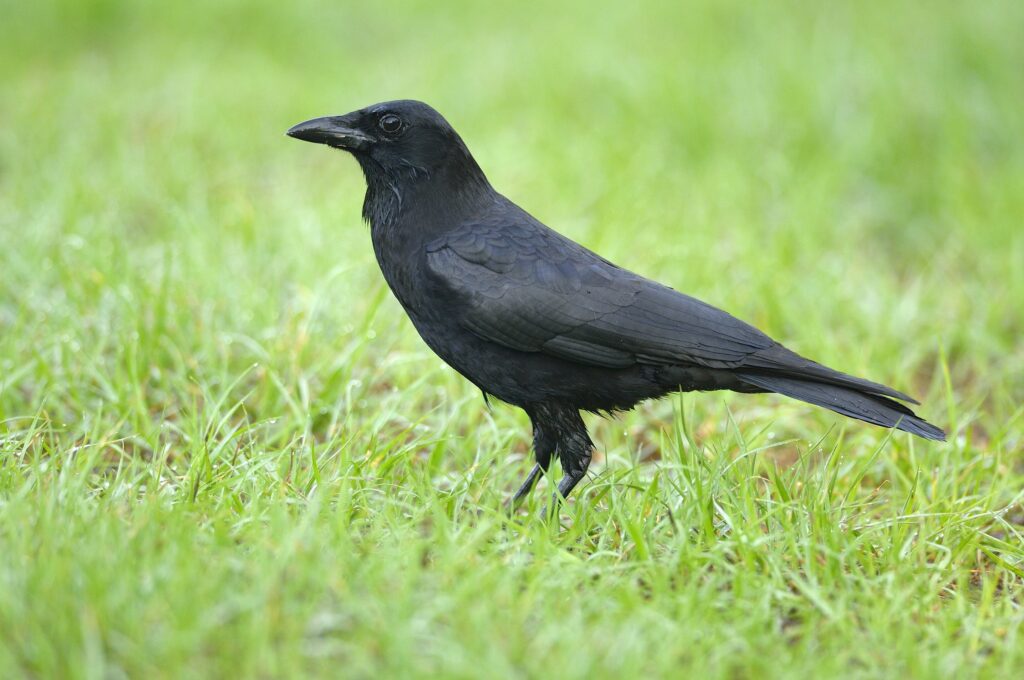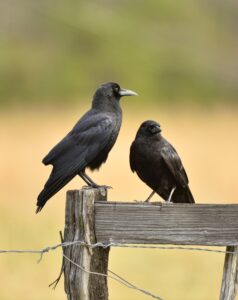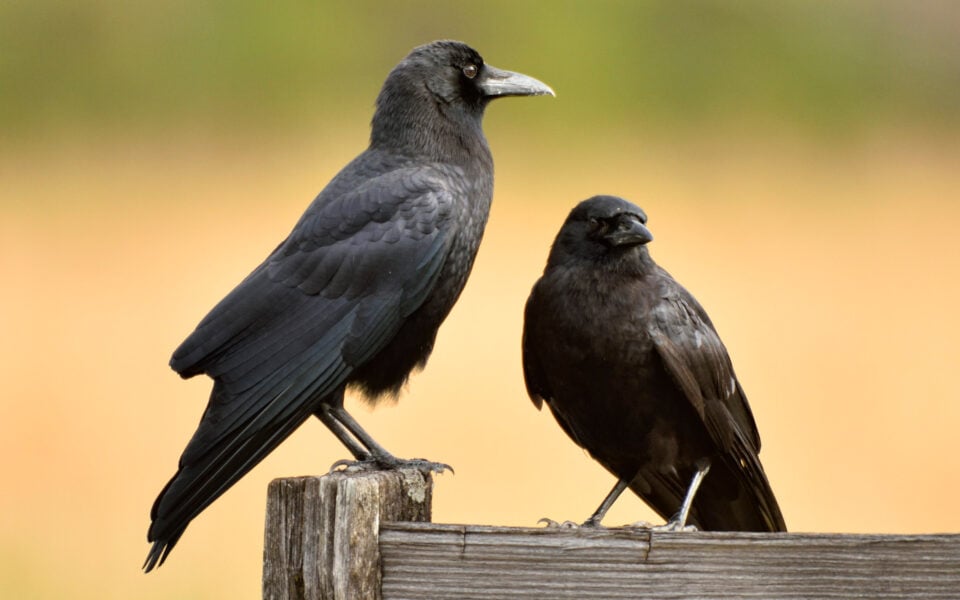Species Profile: American Crow Fast Facts, Trivia, & Management Tips:

The highly adaptable American crow (Corvus bra.chyrhyncos) has a big voice and a mixed reputation. Various Native American tribes revered the crow as a spirit guide, the crow symbol signifying wisdom. According to legends the crow had the ability to talk and was considered the wisest of birds. Hunters imitate their raucous “caw, caw, caw” sounds to locate turkeys and call in crows. On the flip side, crows earn a bad reputation for being an irritating noise and mess nuisance in urban areas and for damaging crops. In Western cultures they’re often associated with death, disease or a bad omen. Crows are, in fact, highly intelligent, adaptable, clever, live long lives and are very protective of their young.
There are about 40 species of crows in the world. Birds in Flight estimates the global breeding population at 27 million. The American crow inhabits most of North America with the exception of deserts, into Canada and northern Mexico. Social birds and highly adaptable, crows can be found practically anywhere-shorelines, farmlands, fields, woodlands, cities, parks, urban areas and landfills.
The crow is about the size of a ruffed grouse, averaging from one to two pounds. Males and females differ very little, both have black plumage that shows iridescence in sunlight, large pointed beaks and black or gray legs. The tail is square shaped, wings rounded and the body is blocky. Crows are best known for their raspy “caw-caw” call.
Crows are opportunistic omnivores and will eat just about anything. Their diet includes insects, reptiles, shellfish, garbage, eggs and young of other birds, berries, fruit, seeds and grains. Crows scavenge at dumps and quickly locate roadkill and other dead animals. A crow’s bill cannot open the hide so they rely on other scavengers to do it. Crows have the ability to find solutions as evidenced when hard shelled foods like mollusks are carried high in the air then dropped on rocks to shatter.
Crows don’t breed until 2-4 years of age. They are monogamous, family oriented and very protective of their young. Young crows from previous seasons and unmated birds remain a part of the family unit and act as “helpers” to raise the young. Predators of adult crows include owls, hawks and humans. Raccoons prey upon eggs and nestlings. Crows will work together to harass and drive away predators, a behavior known as “mobbing”.
Despite eradication, attempts when crows severely damage crops they are not considered threatened and rank Least Concern on the IUCN Red List. Interestingly, they are particularly susceptible to West Nile virus infection. Nearly all crows that contract it die within a week. Crows offer hunting opportunities and even table fare for the adventurous foodie. Think crow pie! Crow hunting is excellent preseason practice for duck hunters and training gundogs. Check local regulations. They vary widely across the country. The most effective method to hunt crows is by calling them. Mossy Oak camo is a must for these extremely wary and sharp-sighted birds.
Did You Know the American Crow…

- Crows have been around for some 17 million years, first appearing in the Miocene Period.
- Crows gather in communal roosts of several hundred to tens of thousands. Winter flocks may number up to a million birds
- Crows will gather around severely injured or sick crow then attack and kill it swiftly. The term for a group of crows is a “murder of crows”.
- Crows are part of the songbird family though they’re not known for singing. They have a complex voice box capable of imitating other bird sounds, car alarms, animals and even human voices.
- A crow’s brain is very similar to a human’s. They are highly intelligent and capable of facial recognition. Crows have proven they can identify a person from a group of people who has demonstrated bad intentions.
- Crows gather around a dead one but do not touch or scavenge it. Studies show the mass gathering is a survival strategy. Crows hesitate to revisit such sites even if food is plentiful.
- The oldest recorded wild American crow was at least 16 years and 4 months old when it was recaptured and re-released during a banding project.
Join our weekly newsletter or subscribe to GameKeepers Magazine.
Your source for information, equipment, know-how, deals, and discounts to help you get the most from every hard-earned moment in the field.






